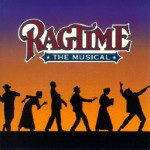 No movie adaptation of a book can appear in the cinema without bringing along the repeated discussion of what makes a good adaptation. Articles deal with it, even Youtube videos deal with it, and when I was given the assignment to moderate the class of the movie adaptation of E.L. Doctorow’s 1975 novel, Ragtime, I dealt with it.
No movie adaptation of a book can appear in the cinema without bringing along the repeated discussion of what makes a good adaptation. Articles deal with it, even Youtube videos deal with it, and when I was given the assignment to moderate the class of the movie adaptation of E.L. Doctorow’s 1975 novel, Ragtime, I dealt with it.
I chose the above links because what they articulate is what I generally believe in. There is no point in subordinating either medium as both work with different tools and a movie adaptation is always given the chance to add something new, that a book may not be able to communicate. With these thoughts in mind I first read Doctorow’s novel, and then I sat in front of the TV and played the 1981 movie version of Ragtime.
Ragtime, being an American musical genre, of course immediately brings in a level of music when interpreting either book or movie, and this aspect was what I found most interesting in the movie adaptation. In this blog post, I will highlight a few ways the music might be dealt with in the movie.
First and foremost, it is waltz music what we first hear before we see anything on the screen and it is what we will hear
 last at the end. But why choose waltz music as a frame for a movie entitled Ragtime? One interpretation could be that the rhythm of waltz music represents the norms and ideas valued by the turn-of-the-century America’s white citizens. Though the protagonist, Coalhouse Walker Jr., is a well-dressed, well-spoken professional African American musician challenging the expectations of the early 1900s America, he soon finds himself facing racism after an incident in front of a fire station. He sets his life on gaining justice but fails in the end and is killed. He thus fades away together with the ragtime music he plays, emphasizing that his attempt to assimilate within the white society has failed.
last at the end. But why choose waltz music as a frame for a movie entitled Ragtime? One interpretation could be that the rhythm of waltz music represents the norms and ideas valued by the turn-of-the-century America’s white citizens. Though the protagonist, Coalhouse Walker Jr., is a well-dressed, well-spoken professional African American musician challenging the expectations of the early 1900s America, he soon finds himself facing racism after an incident in front of a fire station. He sets his life on gaining justice but fails in the end and is killed. He thus fades away together with the ragtime music he plays, emphasizing that his attempt to assimilate within the white society has failed.
 However, it is not only assimilation that we can talk about regarding music, but also the desire for accepting dissimilarity. In a way that waltz music can be “ragged”, so does Coalhouse try to transform society’s understanding of African Americans, but he has to realize that people are not ready to accept change. Nonetheless he believes in his views all throughout the plot and refuses to withdraw from them. This refusal to accept the general view in society is also represented towards the middle of the movie, where Younger Brother asks him what kind of music he plays. Coalhouse answers the following: “Anything they ask me to, and then I play Ragtime.”
However, it is not only assimilation that we can talk about regarding music, but also the desire for accepting dissimilarity. In a way that waltz music can be “ragged”, so does Coalhouse try to transform society’s understanding of African Americans, but he has to realize that people are not ready to accept change. Nonetheless he believes in his views all throughout the plot and refuses to withdraw from them. This refusal to accept the general view in society is also represented towards the middle of the movie, where Younger Brother asks him what kind of music he plays. Coalhouse answers the following: “Anything they ask me to, and then I play Ragtime.”
The movie Ragtime, is therefore another great example of how movie adaptations may introduce new tools of communicating ideas. It may not be faithful in many aspects of the book, however, as The Guardian article also claims: “The loosest of adaptations are sometimes the best”, and in the case of Ragtime, I think this is certainly true.
Sources:
1. http://schoolworkhelper.net/ 2. http://wikipedia.org/ 3. http://www.eldescodificador.com/

